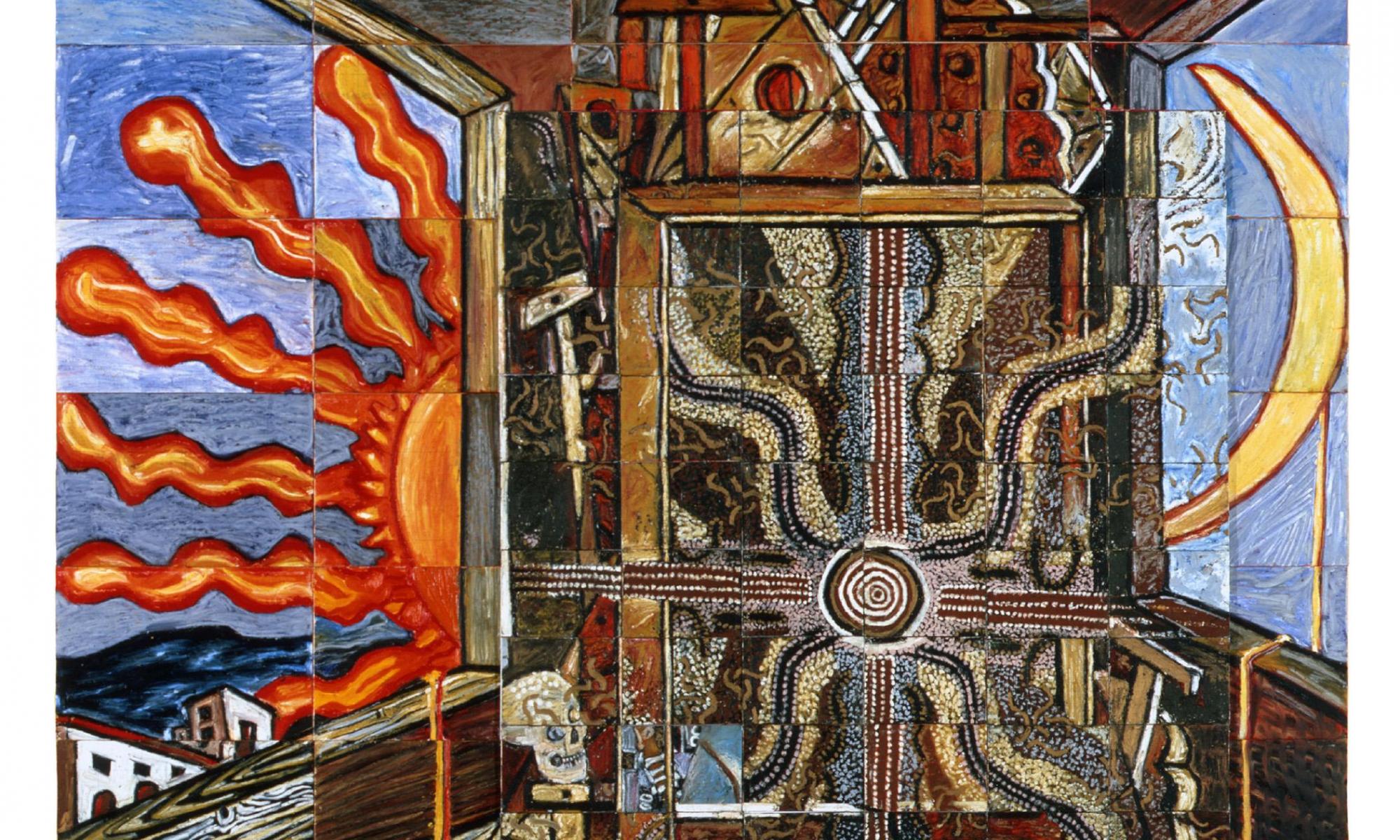Magical Appropriations: Barry William Hale after Imants Tillers
The conundrums of Barry William Hale’s 2009 book Legion 49: A Grimoire are the conundrums of Imants Tillers’ now classic essay on appropriation, ‘Locality Fails’. [1] They are the conundrums of sorcerers, magicians and masons in a secular age. What power has the symbol in a disenchanted age? The rituals that once invested signs with the power of things are now archaic, part of a culture swept aside by modernity. In turn, modernity has itself become invested with archaic powers, its masons dwelling in computer algorithms and military think tanks, puppet masters of new mass powers. Legion 49 offers instead a ritual, personal practice for calling up demons, for naming, bargaining and controlling the chaotic. His is a magical system illustrated with an alphabet of possibilities, from ‘Alcanor: A light-flash, perhaps bird-like’ to ‘Zagalo: A big frog, green with dull yellow spots’. [2] Introducing the demons is a brief history of exorcist guidebooks, from the Biblical-era Testament of Solomon to the revelations of Aleister Crowley. Legion 49 is one more guidebook, one more set of names for the unnameable, an infinite series for controlling and bargaining with the infinite. This is the conundrum that Tillers also grappled with, in which the world appears finite but contains infinite possibilities. This is the problem of modernity itself, whose disenchantment with magic only drives this magic into ever more powerful, maddening forms, which arise in spectacular conjunctions with the rationalism attempting to harness magic’s powers.
[1] Imants Tillers, ‘Locality Fails’, Art & Text, no. 6, 1982, pp. 314–25, 319.
[2] Barry William Hale, Legion 49: A Grimoire, Fulgur, London, 2009, n.p.
Image:
Imants Tillers
Antipodean Manifesto, 1986
Oilstick, oil, acrylic on 116 canvasboards, nos. 9611–9726
254 x 190.5 cm
Private collection, Sydney
Courtesy of the artist


